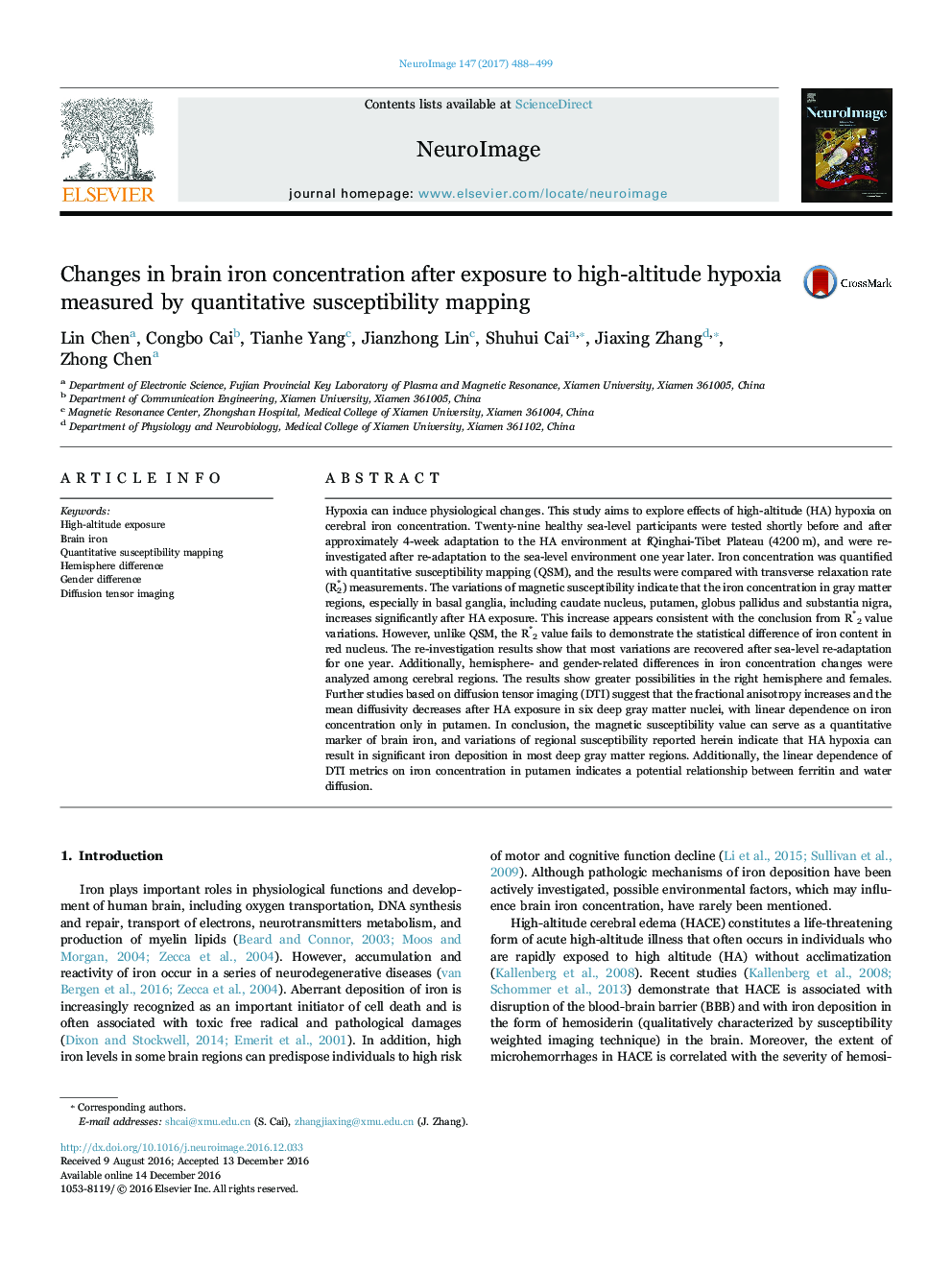| کد مقاله | کد نشریه | سال انتشار | مقاله انگلیسی | نسخه تمام متن |
|---|---|---|---|---|
| 5631520 | 1580863 | 2017 | 12 صفحه PDF | دانلود رایگان |
- Changes of brain iron concentration after high-altitude exposure were studied.
- Iron in the basal ganglia shows high sensitivity to hypoxia environment.
- Brain iron changes after high altitude exposure are hemisphere- and gender-related.
- Most brain iron changes are recovered after sea-level re-adaptation for one year.
- Iron accumulation keeps close relationship with water diffusion in putamen.
Hypoxia can induce physiological changes. This study aims to explore effects of high-altitude (HA) hypoxia on cerebral iron concentration. Twenty-nine healthy sea-level participants were tested shortly before and after approximately 4-week adaptation to the HA environment at fQinghai-Tibet Plateau (4200Â m), and were re-investigated after re-adaptation to the sea-level environment one year later. Iron concentration was quantified with quantitative susceptibility mapping (QSM), and the results were compared with transverse relaxation rate (R*2) measurements. The variations of magnetic susceptibility indicate that the iron concentration in gray matter regions, especially in basal ganglia, including caudate nucleus, putamen, globus pallidus and substantia nigra, increases significantly after HA exposure. This increase appears consistent with the conclusion from R*2 value variations. However, unlike QSM, the R*2 value fails to demonstrate the statistical difference of iron content in red nucleus. The re-investigation results show that most variations are recovered after sea-level re-adaptation for one year. Additionally, hemisphere- and gender-related differences in iron concentration changes were analyzed among cerebral regions. The results show greater possibilities in the right hemisphere and females. Further studies based on diffusion tensor imaging (DTI) suggest that the fractional anisotropy increases and the mean diffusivity decreases after HA exposure in six deep gray matter nuclei, with linear dependence on iron concentration only in putamen. In conclusion, the magnetic susceptibility value can serve as a quantitative marker of brain iron, and variations of regional susceptibility reported herein indicate that HA hypoxia can result in significant iron deposition in most deep gray matter regions. Additionally, the linear dependence of DTI metrics on iron concentration in putamen indicates a potential relationship between ferritin and water diffusion.
Journal: NeuroImage - Volume 147, 15 February 2017, Pages 488-499
